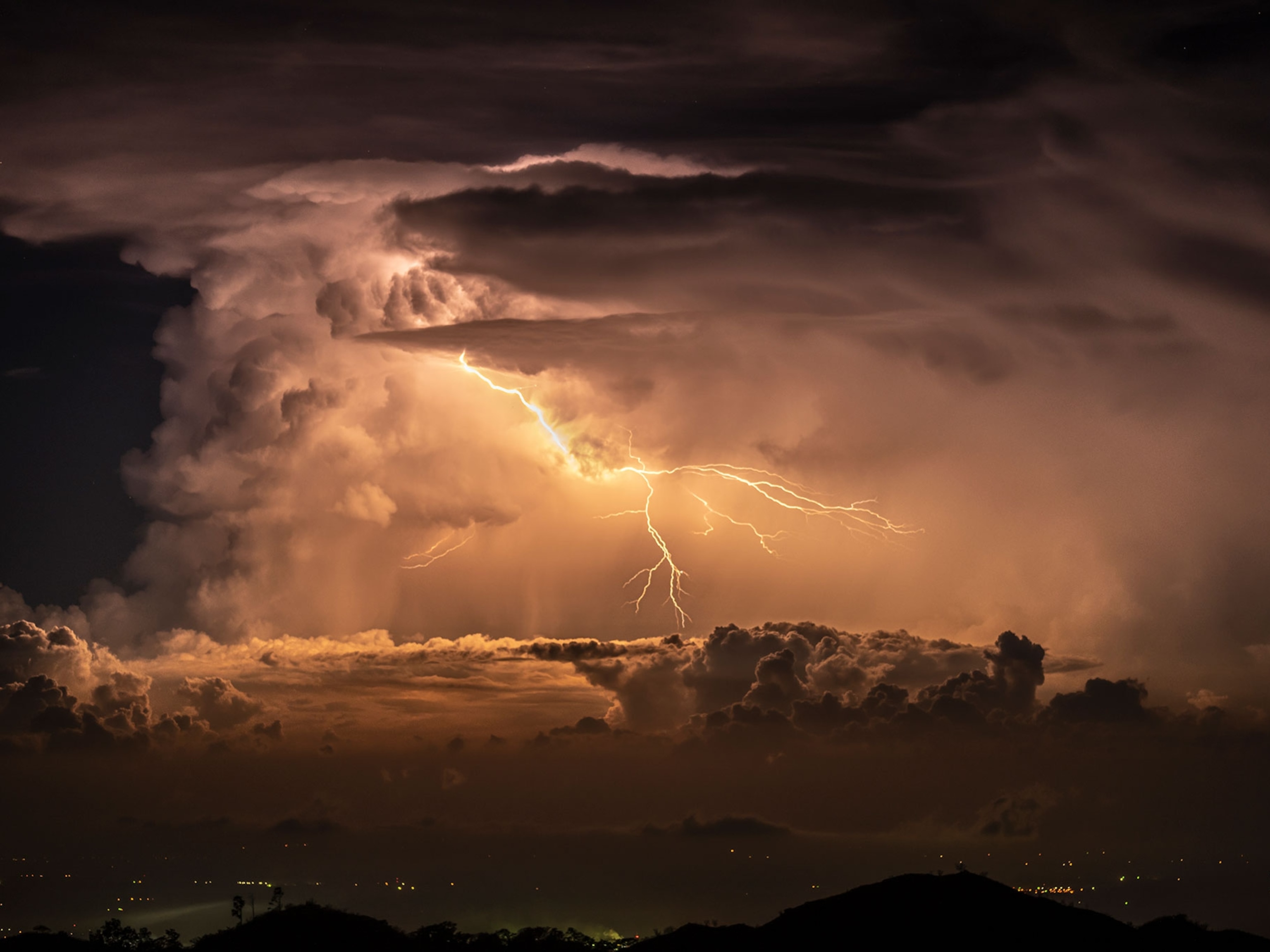
Diamonds Stud the Atmospheres of Saturn and Jupiter
Precious gems generated by lightning storms, study says.
It sounds like science fiction, but as much as 10 million tons of diamonds may be stored in Saturn and Jupiter, researchers announced this week.
Observational evidence of storms on Saturn that actively generate carbon particles, combined with new laboratory experiments and models that show how carbon behaves under extreme conditions, have led a pair of scientists to posit that both planets may offer stable environments for the formation of diamonds.
(Related: "Saturn's Rings Hit by Meteor Shower.")
"We now know the high temperature limit [8,000 Kelvin] for solid diamond, above which it melts. And we also now have more precise pressure [and] temperature structures for the interiors of Saturn and Jupiter," said Kevin Baines, a planetary scientist at University of Wisconsin–Madison and co-author of the study presented this week at a conference in Denver, Colorado.
"These two results together show us for the first time that solid diamonds can exist over large vertical regions of both planets."
Earlier theories included only Uranus and Neptune as suspected diamond producers. Scientists suggested that intense temperature and pressure on those planets may be able to convert atmospheric methane gas directly into diamonds, which rain down into their interiors.
Jupiter and Saturn, which are presumed to have much lower temperatures and less methane, have traditionally not been associated with the capacity to form these precious gems.
About half of one percent of Saturn's atmosphere is methane. Jupiter has only about 0.2 percent. On Uranus and Neptune, however, close to 15 percent of the atmosphere is made up of the gas.
Giant lightning storms spotted by Cassini spacecraft in the upper clouds of Saturn—similar storms have been seen on Jupiter—may be the key events that spark the production of diamonds, according to Baines.
Dark stormy regions seen on infrared images are thought to correspond to the breakup of methane molecules into carbon, most probably soot particles.
Once formed, the new theory states, noncrystalline carbon sinks down through the atmosphere until it reaches an altitude of similar density and is converted to graphite under the increasing pressure. The graphite continues its descent into the deeper depths of Saturn's atmosphere until pressure and temperature builds and converts the material into solid diamonds.
"This creates about a thousand tons of diamonds per year, and I estimate that in the 30,000-kilometer-thick diamond-containing layer, there are about 10 million tons of diamonds formed in this manner," said Baines.
Liquid Diamond Seas
At the greatest depths of Jupiter's atmosphere, the conditions are so extreme that the gems may actually form an ocean of liquid diamond.
"Below that layer, where the diamonds melt, the atmosphere becomes so hostile with atomized and ionized hydrogen that it is likely that the melted diamond is transformed into other materials.”
The interiors of Uranus and Neptune are much cooler and never reach 8,000 Kelvin, so diamonds on these more distant worlds probably never melt.
"We can therefore say that, most probably, diamonds are forever on Uranus and Neptune but not on Jupiter and Saturn," said Mona Delitsky, a planetary scientist at California Specialty Engineering in Pasadena, California, and lead author of the study.
But planetary scientist William Hubbard, of the University of Arizona, expressed skepticism about the carbon chemistry proposed in this study. He thinks that the amount of soot produced by Saturn's lightning storms is too small for diamond production, and that the soot is most likely destroyed by the increasing pressure and temperature as it wafts down to deeper layers of the atmosphere.
"The pyrolyzed [broken down due to heat] carbon might just form a solution with the hydrogen, and not precipitate out [into diamonds]," said Hubbard.
"Diamondbergs"
The possible size of these cosmic diamonds is subject to speculation. Delitsky thinks they may start out one micron in size as lightning-generated soot. Those particles grow as they fall, much like raindrops, into the deeper interior of the planet, eventually forming gems at least pea size, with some growing so large that they could be called "diamondbergs."
"They are probably much larger than nano-diamonds, possibly sizable chunks that you could hold in your hand," she added.
"In the far distant future, robotic probes could possibly mine these diamonds in the deep atmospheres of these gas giants."
The study was presented at the 45th annual meeting of the Division of Planetary Sciences of the American Astronomical Society.





